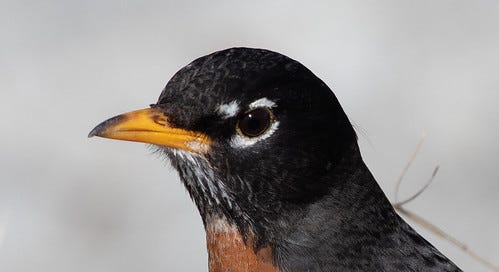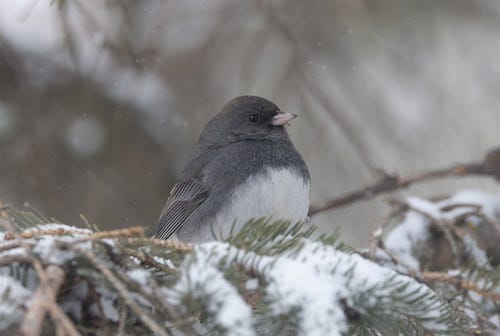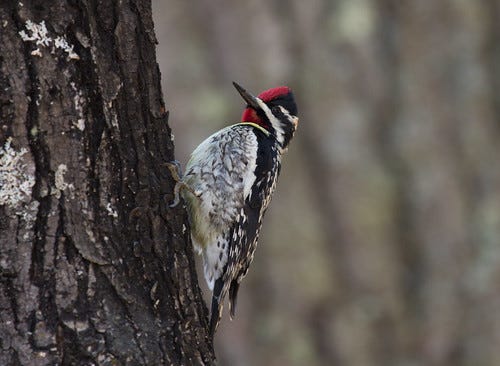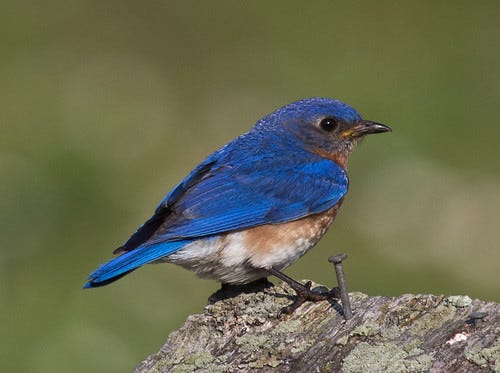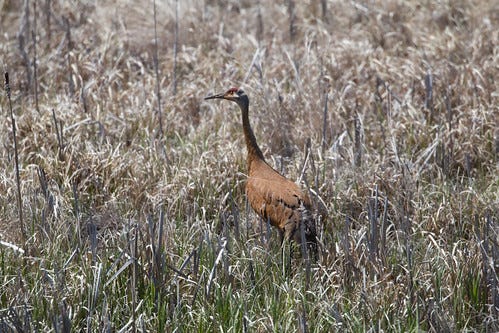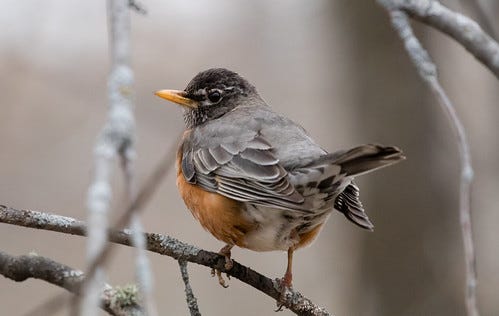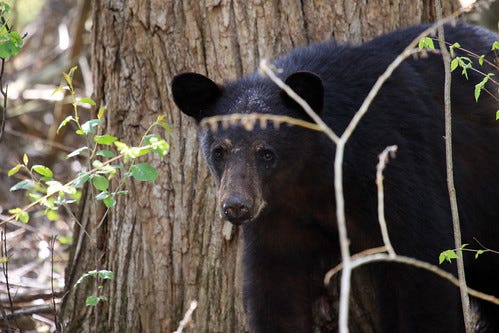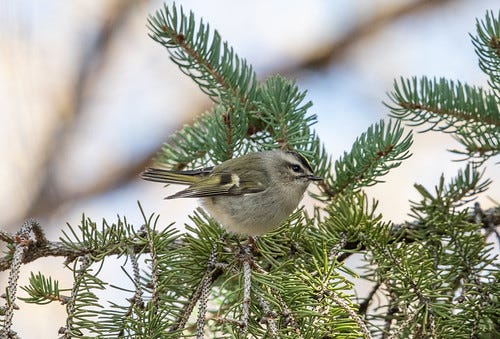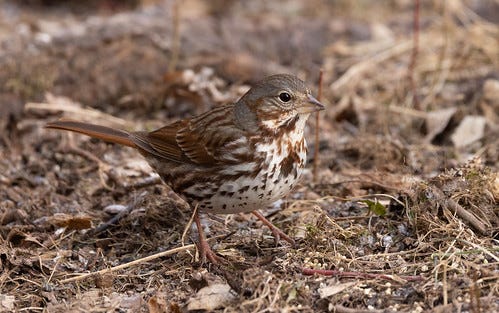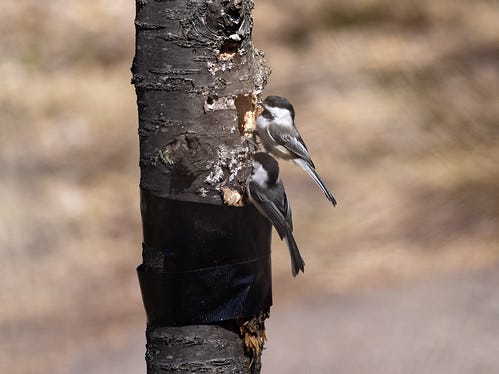Listen to the radio version here.
T.S. Eliot began his work The Wasteland with the lines:
April is the cruelest month, breeding
Lilacs out of the dead land, mixing
Memory and desire, stirring
Dull roots with spring rain.
For many of us, the cruelty of April stems from the month’s inconstancy and unpredictability as temperatures, winds, and dreams of balmy days ahead fluctuate wildly.
But even in the face of an April blizzard, hope is astir in the land. Dull roots are indeed stirred with spring rain and melting snows, and our memories of years past and our desires for new growth and rebirth seem to me to be far more hopeful and happy in April than in that other month of wild unpredictability, November.
To the undiscerning eye, the woods look pretty similar on a November day and an early April day, the trees leafless, the dead leaves brown and still. But in April, those bare branches are bulging with buds, and even as snow piles remain in the low spots, frogs trill, robins and juncos sing, and woodpeckers drum. Our own blood seems to flow more freely as maple sap flows.
We impatiently await leaf-out and flower blooms and hummingbirds and orioles, but evidence of spring is already abundant. Yellow-bellied Sapsuckers quietly but earnestly prepare the way for later migrants, digging out little wells in the tree bark where the rich sap will provide nourishment for hummingbirds, kinglets, warblers, and phoebes.
The first bluebirds and swallows inspect our bird houses.
Sandhill Cranes arrive and females start sitting on eggs, their gray and brown backs blending in with dead vegetation and bare soil.
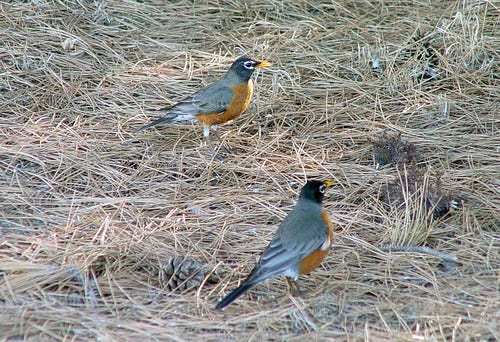
Many male robins spend the whole winter in the north, so in March and April, we can’t look at a robin to know if he’s the first robin of spring or the last robin of winter—we must use our ears. In winter, robins are sociable, joining flocks of waxwings and Pine Grosbeaks to feed on berries. It’s when they break out of flocking mode and grow territorial that they start singing. That first robin song is balm to our soul, especially on a frigid morning when we’re carefully negotiating ice-encrusted snow to fill our feeders.
Female robins arrive a week or more after males, waiting until the ground is much more thawed—they can’t begin building a nest before wet mud is available. The females are usually the ones who inspect our eaves and spruce branches. Once we human gardeners can finally start digging in the soil, both male and female robins eye us hopefully on the off-chance that we’ll toss out a nightcrawler or two.
In April, our feeders are jeopardized by bears, hungry after a long winter’s sleep, impatient and unwilling to wait for Nature to fix them some breakfast when suet and seeds are set out so invitingly.
Up here in Duluth, April is the month of huge hawk movements, when kestrels suddenly reappear on telephone wires and red-tails and eagles circle overhead. It’s hard to pull our eyes away from them to scrutinize the spruce branches, but when we do, tiny golden-crowned kinglets reward the effort.
These endearing little sprites are so busy and active that they’re hard to hold in view for more than seconds. Is it their endless energy that makes them so endearing? Barely bigger than hummingbirds, these tiniest of songbirds check us out when we whistle or go “psshhhhhhh, psshhhhhhhh, psshhhhhhhh!,” though they’re so quick that we may miss them if we aren’t focused and fast.
As the sun rises on an April morning, the air is filled with song—robins, fox sparrows, juncos, whether or not a late snow is flying. I’ve made some of my prettiest Fox Sparrow recordings during April snowstorms.
Chickadees whistle their “Hey, sweetie!” song over and over and over, the urgency of romance almost palpable. We humans think of June as the month for weddings, but many birds, from cranes, woodcocks, and Boreal Owls to robins and chickadees, consummate their love in April.
Is April truly the cruelest month? Perhaps it is for those who plant their gardens a bit too early, or for those who yearn for picnics and swimming and summer heat. But I suspect April is most cruel for lonely souls, in the face of all the pairings and romantic songs and surging new life all around. Perhaps we must feel a part of nature, rather than bitter onlookers, to take joy in the reawakening of song and romance and nesting and new life. April may stir memory and desire, making us as sad as T.S. Eliot, but we can choose to be soothed like Rachel Carson, who found “something infinitely healing in the repeated refrains of nature—the assurance that dawn comes after night, and spring after the winter.”
(This post has been recast from a 2004 “For the Birds” transcript for which the audio has been lost.)


